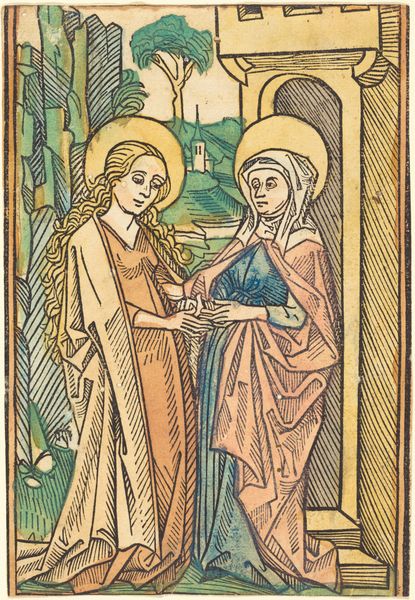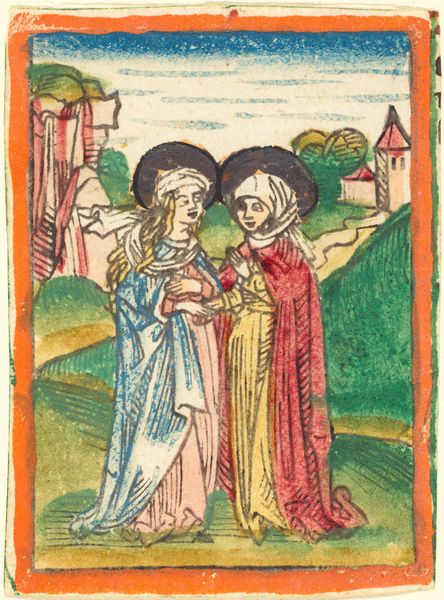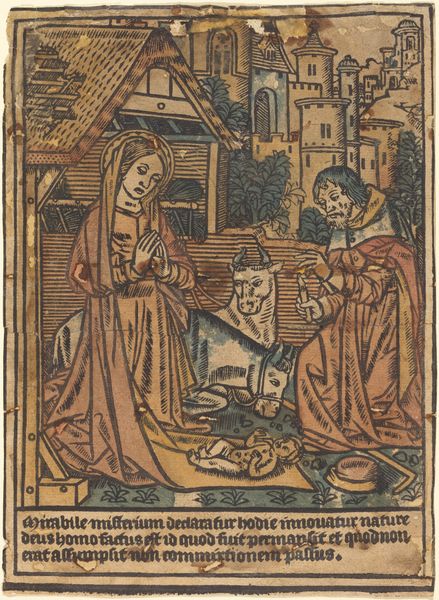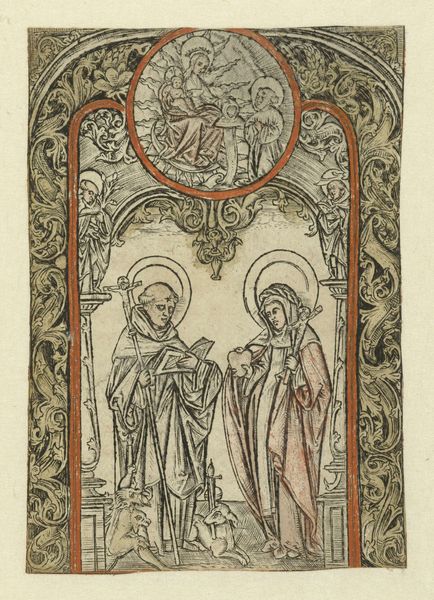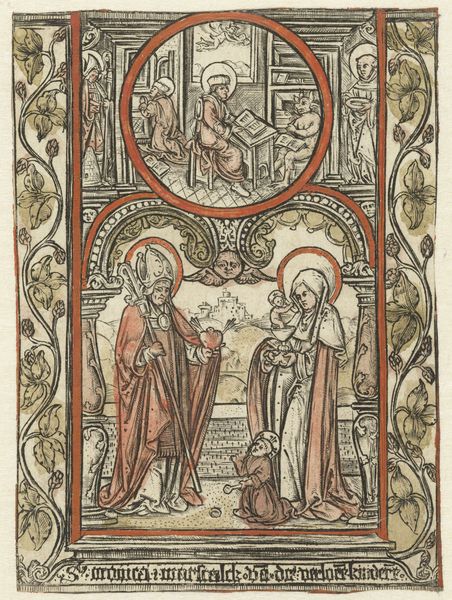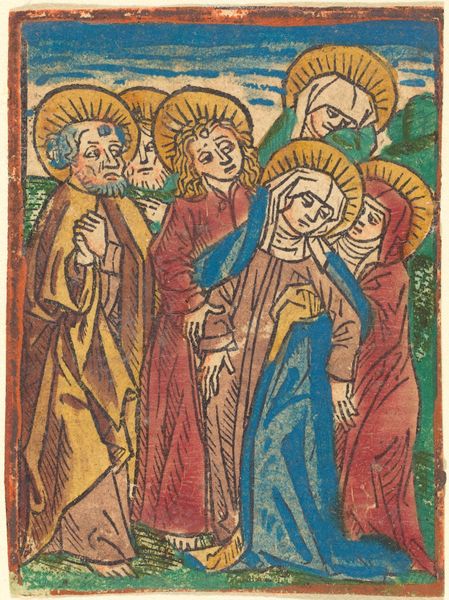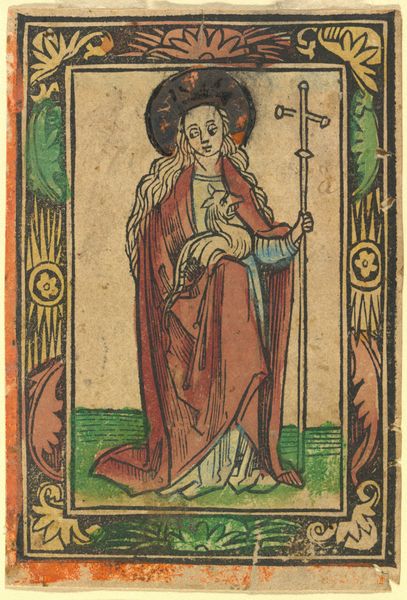
print, woodcut
# print
#
figuration
#
woodcut
#
history-painting
#
northern-renaissance
Copyright: National Gallery of Art: CC0 1.0
Editor: So, here we have an early woodcut from around 1480, "Saint Francis and Saint Clara". The anonymous artist chose a rather simple composition, but the mood feels... intense, almost devotional. What do you see in this piece? Curator: This image, despite its seemingly straightforward depiction of Francis and Clare, vibrates with the socio-religious currents of its time. It is more than a devotional image; it reflects a specific understanding of gender roles and religious authority within the Franciscan order. Notice how Francis, on the left, displays the stigmata, reinforcing his direct connection to Christ, a visual validation of male spiritual authority. Editor: And Clara with her Abbess crosier? Curator: Exactly! The crosier signifies her position as Abbess and the power she wields within the female religious community. The very act of depicting them together raises crucial questions: How did the visual pairing of these figures serve the evolving social and religious identity of the Franciscan movement? What aspects of female spiritual leadership were deemed acceptable, and how were those boundaries visually maintained? Consider the limitations placed on women's spiritual expression during the late medieval period. Editor: So it's not just a picture of two saints; it's about power dynamics and social expectations. The visual language almost seems to carefully negotiate what’s acceptable. Curator: Precisely. The red lines from the Holy Spirit draw focus to their bodies, hinting at shared stigmata. However, while Francis’ are prominently on display, Clara’s remain concealed under her habit, perhaps emphasizing a visual restriction of female power, even in spirituality. What are your thoughts about this, then? Editor: I never thought about it that way! Now I see how an image that seems so simple actually has so much to say about gender, power, and religious identity. Curator: Absolutely. This piece reveals the intersectionality between art, faith, and social power, prompting us to explore beyond the surface and understand the nuanced historical narratives embedded within it.
Comments
No comments
Be the first to comment and join the conversation on the ultimate creative platform.
